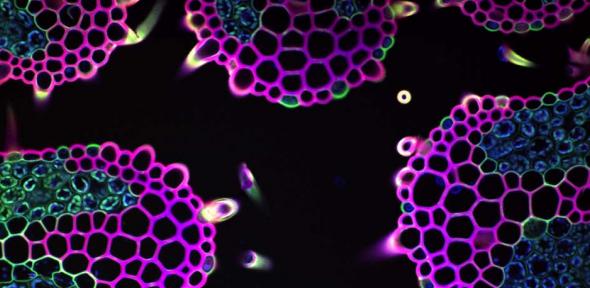
This was the first meeting in the series and the aim of was to take a global view of pressures and drivers of land use change and to help lay the foundation for the rest of the year.
Ariel Brunner, the Head of EU Policy at BirdLife International travelled over from Brussels to help us to start to think about how biodiversity connects to the other elements of this topic. He joined Dr Tina Barsby, the CEO of the National Institute of Agricultural Botany (NIAB) in Cambridge who focused on food security and agriculture and Professor Paul Dupree, Professor of Biochemistry in the Department of Biochemistry who discussed his research into the development of sustainable biofuels that do not adversely affect the food chain.
Research gaps
Tina Barsby talked about ways in which research is driven by the market, particularly how/what crops get on to the market. She argued that there is a tension and a gap between the commercial value of supply and the public demand for crop varieties. Balancing populations demands for energy and food security will increasingly demand local solutions for local people so she very interested in participatory plant breeding and how to farmers in the collection and preservation of genetic diversity. Many of these new crops are developed for commercial purposes so she calls for more research into ways to transfer technology developed for commercial gain into non-commercial areas. She highlighted ‘orphan crops’ such as sweet potatoes, cassava, bananas which reproduce vegetatively and are locally important but where relatively little work has been done.
In his introduction, Ariel outlined some of the tensions between agriculture and biodiversity, between asking questions about both of these at global compared to local scales and between the perceptions and needs of the developed and the developing world. He argued that although there is a real interest in sustainable farming and in sustainable intensification, more research is needed into what these mean in practice and what impact they would have on biodiversity and ecosystem services.
Paul argued that there is huge potential for creating biofuels from the sugars in plant cell walls. For example, it is now feasible to convert these sugars into ethanol and it is becoming more economically viable. He recommended research focused on the opportunities for renewables using waste materials. New methods to produce these fuels would part of this. However, he wondered what the effects of developing these technologies could be on land use and on the land itself, particularly if those waste materials, such as straw, are currently ploughed back into the soil to improve its condition.
Wicked problems and questions generated by the open discussion
There were strikingly different views about the role that technological advances such as genetic modification (GM) could play in offering ‘solutions’. Some saw genetics as the solution to problems of food security and environmental degradation (i.e., we can just use genetic tools to breed better crops that use fewer chemical inputs); whereas others saw GM as one of the major threats to both of these (i.e., the success in creating high-yielding crops has narrowed our diet to a few crops which are inbred and require uniform environmental conditions and high inputs). Technological fixes are never as straightforward as is initially imagined but we were left asking the question: how can we reconcile these very different views about the role of technological solutions in the future of agriculture?
What sustainable farming is and what it means in practice for biodiversity and the environment as well as for the crops themselves was first raised here and kept coming up throughout the year.
Are we complicit in optimising a food production system that needs fundamental change or should we all continue on a path that makes ‘baby steps’ that we hope will collectively shift us in the right direction? In other words, how do we find questions that are narrow enough to allow real research but that answer the bigger problems that clearly cannot be addressed through the sum of small improvements?
Food security today is a local, not a global issue, so how can we bring scale into this discussion and develop holistic sustainable farming scenarios for specific locales?
References for background reading
Powell, W. & Barsby, T. (2013) Germplasm diversity and genetics to drive plant breeding for Africa. In: Successful Agricultural Innovation in Emerging Economies: New Genetic Technologies for Global Food Production (Ed. by D. J. Bennett & R. C. Jennings), pp. 82-94. Cambridge, UK: Cambridge University Press.
Mortimer, J. C., Miles, G. P., Brown, D. M., Zhang, Z., Segura, M. P., Weimar, T., Yu, X., Seffen, K. A., Stephens, E., Turner, S. R. & Dupree, P. (2010) Absence of branches from xylan in Arabidopsis gux mutants reveals potential for simplification of lignocellulosic biomass. Proceedings of the National Academy of Sciences, 107, 17409-17414.
For more information about the Forum or this meeting, please contact Dr Rosamunde Almond (r.almond@damtp.cam.ac.uk)


